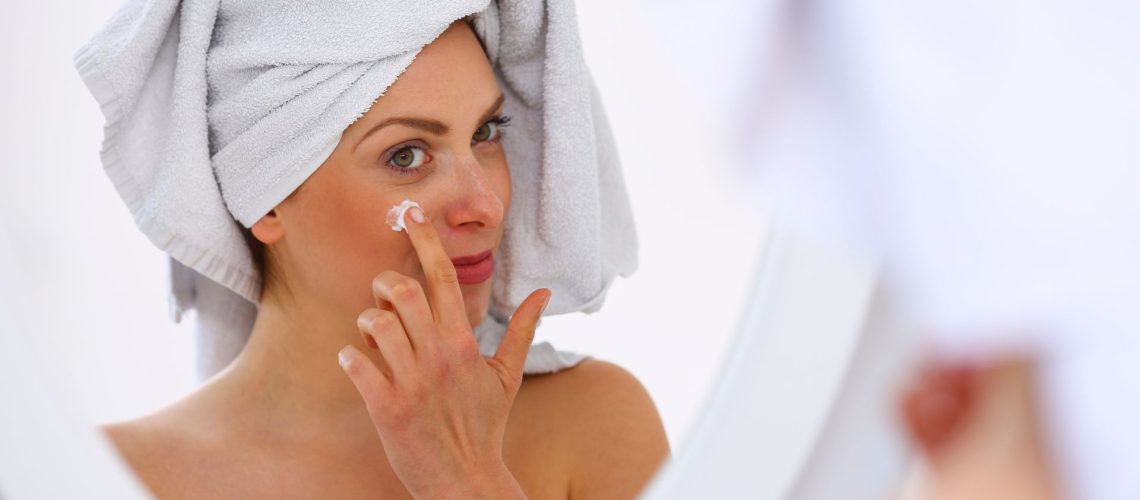Are you looking for natural makeup that will keep your skin glowing all day long? The power of makeup is undeniable. Our favorite products help create the beauty we love, enhance the features we love, and embody our individual definition of beauty. It boosts your confidence and helps you face the world head-on no matter what the day throws at you. Knowing how to use foundation is not an easy task. Delicate, radiant skin without blemishes or scars. Brush up on your foundation application skills. Because wearing makeup shouldn’t be an achievement shrouded in mystery. To simplify the foundation process, we’ve broken down the exact steps and techniques to achieve the most natural look every time.
When it comes to makeup, using foundation can make all the difference.
Gentle exfoliation
When old keratin accumulates on the surface of the skin, it causes clogged pores, dullness, uneven color, etc. Using an exfoliant or exfoliating cleanser is a surefire way to keep your skin smooth and glowing and give you an even base for makeup to adhere.

we recommend you gently exfoliating before applying makeup, typically exfoliating 2-3 times a week to remove dead skin cells, smooth the face, and prep for the perfect makeup look. If you have dry skin, exfoliation can remove dry patches, and if you have oily skin, it will help remove excess dead skin cells that tend to clog pores.
Apply an eye mask and cream
If you want your eye area to look brighter and your concealer to last, prepping your eyes is a must. It helps your foundation and concealer blend in more smoothly and makes your makeup last longer. You need to make sure you’re using the right products for your skin type.
Wash your face with lukewarm water and a mild cleanser
Choose a facial cleanser based on your skin type. Use a moisturizing wash for dry skin and an oil- and alcohol-free wash for oily skin. For combination or sensitive skin, try an ultra-mild cleanser such as micellar water.
Exfoliate your face 2-3 times a week. It removes dead skin cells from pores and leaves skin even smoother.
Removing dirt, oil, and impurities from your skin is the first step in applying any makeup product.
If you wash your face before applying makeup, your skin will be smoother and your makeup will stick better.
Apply non-drying alcohol-free toner. Soak a cotton pad in the toner and rub it gently over your face to remove any remaining dirt. Wait a few seconds for the toner to dry almost completely before applying other products or cleaning agents.

Toners help unclog pores and moisturize and refresh skin.
Apply a thin layer of moisturizing eye cream
Use your fingers to dab the eye cream or serum onto the thin, delicate skin under and around your eyes. This will even out your skin tone before applying foundation, helping to achieve an “airbrushed” look.
Moisturize your skin with a moisturizer that matches your skin type. If you have oily or acne-prone skin, opt for a water-based, oil-free gel moisturizer. For dry skin, use a rich moisturizer.
Apply a thin layer to the entire face and gently blend into the skin with your fingertips and leave it on for 1 minute.
No matter what your skin type, moisturizing is a non-negotiable part of prepping your skin before makeup. Applying a moisturizer is important to ensure that your foundation and other foundation products adhere to your skin and stay comfortable throughout the day. Moisturizing is important, even if you have oily skin. Choose lightweight products to prevent slippery skin.
People with normal or combination skin can use any type of moisturizer.
Moisturizers soften and brighten skin, make foundation easier to apply, and make makeup last longer. Once the moisturizer has penetrated, apply a thin layer of face foundation. Opt for a silicone-based foundation – it protects your face from water loss and fills in your skin’s natural wrinkles for a more even makeup look.
Look for a moisturizing primer for dry skin or a matte primer for oily skin.
Water-based foundations moisturize the skin, but they do not have the smoothing effect of silicone-based products.

Corrects dark circles and red spots visible through foundation
Since foundation is for fine-tuning color, you may not need to do color correction beforehand. However, if you need to cover up conspicuous pimples, blemishes, or rosacea, apply a thin layer of a suitable color corrector to those blemishes and continue with at least a medium coverage foundation.
- Correct slight redness with green.
- Stubborn redness and raisins are prepared with yellow.
- Use yellow or peach to correct brownish under eye circles.
- Corrects dullness and yellowing with lavender.
- To correct dark circles under the eyes, use Salmon (fair), Peach (light), Orange (medium), or Red (dark).
apply a primer for foundation
Just like you don’t paint walls or nails without coat, you don’t want to skip this step and shorten the life of your look. If you’re not a fan of foundation, prepping properly means you can skip it, but depending on your goals, an application can help. Using a non-slip foundation or an oil-controlling, pore-clogging foundation on T-zone is very important. If someone is on the dry side, or wants a glowy, dewy makeup looks, use a moisturizing shine primer all over the face.
Apply liquid or cream concealer before powder foundation. Apply concealer over blemishes and color correctors, or draw an inverted triangle under each eye to hide dark circles. Next, tap the concealer with your ring finger and gently massage it into your skin. The powder you apply afterwards will help set the concealer and keep it in place.
If you don’t want to use your fingers, use a brush or beauty sponge instead. Applying a cream or liquid concealer after a powder base may alter the coverage of your foundation.


